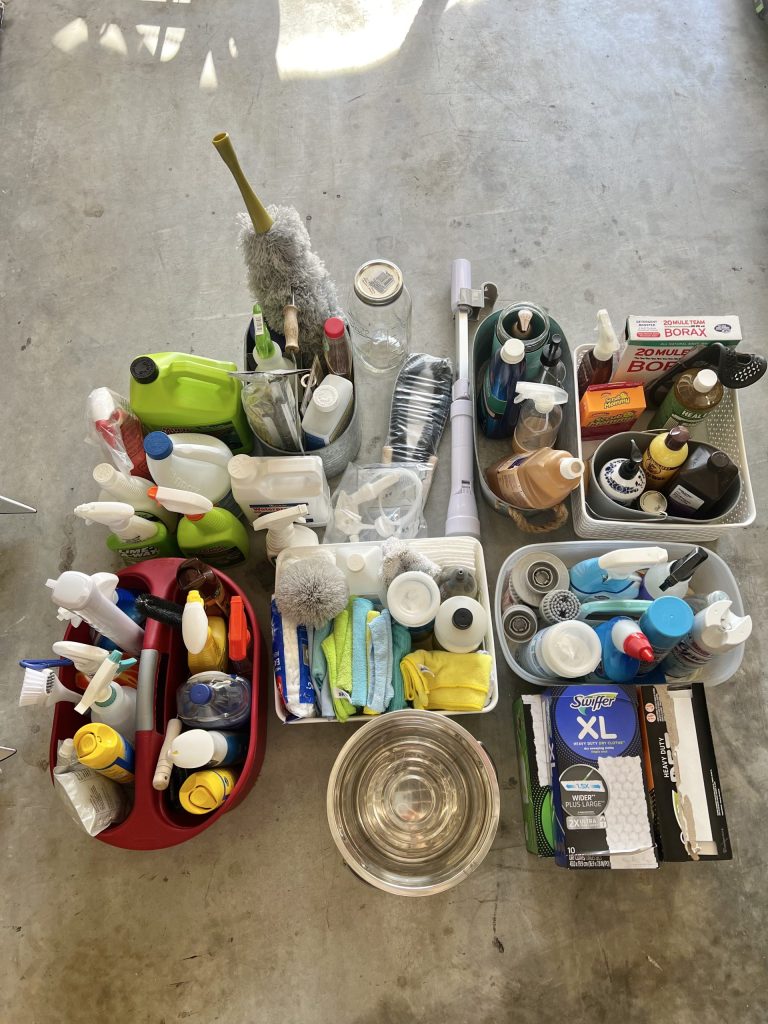How to create an effective weekly cleaning schedule to maximize efficiency in house cleaning

Understanding the Importance of a Structured Cleaning Plan
For many, the thought of keeping a home in pristine condition can appear daunting. Busy lifestyles filled with work commitments, family obligations, and social activities often leave little room for chores. As a result, homes may devolve into cluttered spaces that can create added stress. However, by implementing a structured cleaning plan, maintaining a tidy environment is attainable and beneficial to your overall well-being.
The crux of an effective cleaning strategy lies in meticulous planning and prioritization. Not only does this streamline the cleaning process, but it also offers key benefits that amplify your efficiency:
- Time Management: Allocating specific days for designated tasks minimizes decision fatigue, enabling you to dive into cleaning without procrastination. For instance, setting Mondays for bathrooms and Wednesdays for the kitchen fosters a routine, making these chores feel less burdensome.
- Consistency: Keeping to a schedule allows for regular cleaning, thereby preventing the accumulation of grime and dirt. For example, dedicating 15 minutes each day to quick clean-ups can make a significant difference over time, resulting in less intense cleaning sessions.
- Focus: Concentrating on individual areas during dedicated cleaning days enhances the quality of your efforts. Instead of dashing through multiple tasks, deep cleaning a single room invites a more thorough approach.
To craft a successful cleaning plan, start by assessing your specific cleaning needs. This assessment should take into account several factors including the layout and size of your home, the number of residents, and any unique circumstances that may arise. For example, households with infants or young children may need to address spills and messes more frequently, while pet owners might find themselves vacuuming high-traffic areas daily to keep pet hair at bay.
After you’ve intimately understood your cleaning requirements, the next step is to outline your weekly agenda. Here’s a structured approach to get started:
- Create an exhaustive list of cleaning tasks categorized by frequency—daily, weekly, and monthly. This can range from wiping down kitchen counters every day to deep-cleaning carpets monthly.
- Identify specific tasks for each day of the week to balance your workload and keep all areas of your home adequately serviced.
- Incorporate flexibility into your schedule. Life can be unpredictable, so leave room for adjustments when unexpected events arise, such as family visits or spontaneous social outings.
By carefully following these steps, you can develop a tailored cleaning schedule that caters to your unique lifestyle and enhances your home’s overall cleanliness. Not only will you experience a more organized living space, but you may also find yourself enjoying a less stressful approach to home maintenance. Investing time in a thoughtful cleaning routine stands as a subtle but significant way to uplift your quality of life. Explore different methods, and discover how a structured approach can lead to newfound free time and satisfaction in a well-kept home.

DISCOVER MORE: Click here for insights on prioritizing cleaning
Crafting Your Customized Cleaning Schedule
Once you’ve assessed your specific cleaning needs, the journey toward creating an effective weekly cleaning schedule can truly commence. Developing a cleaning schedule requires more than just picking random tasks to complete; it involves a thoughtful structuring that considers the various factors influencing your home environment. A tailored cleaning plan caters to your lifestyle, ensures seamless daily operations, and promotes an organized living space.
Start by identifying your top cleaning priorities. Understanding which areas of your home require more frequent attention is essential. For example, high-traffic zones such as the living room and kitchen may need daily upkeep, while less frequented areas like guest rooms could be addressed weekly or even bi-weekly. Prioritize your tasks based on factors like usage and visibility.
- Daily Cleaning Tasks: These should encompass the essential chores needed to maintain a baseline level of cleanliness. Common tasks could include making beds, washing dishes, wiping down kitchen counters, and vacuuming high-traffic areas.
- Weekly Cleaning Tasks: This category could involve deeper cleaning actions such as mopping floors, dusting surfaces, and cleaning bathrooms. Assign specific days for these tasks – for instance, designate Thursdays for bathroom cleaning and Sundays for laundry.
- Monthly Cleaning Tasks: These are typically the more intensive chores that require a bit more time and effort, such as scrubbing grout, deep-cleaning carpets, and organizing closets. If you can, dedicate a weekend day each month to tackle these essential tasks.
Furthermore, examine your schedule critically to allocate time for each cleaning activity. A well-structured cleaning routine will often begin with a warm-up task to ease you into the cleaning mindset. For instance, spending the first 10 minutes of your cleaning day on a simple task like making beds can help lay the groundwork for tackling more involved chores later on. By breaking your cleaning into manageable time slots, each task may feel less overwhelming, leading to enhanced productivity.
In addition to breaking tasks down thoughtfully, consider the unique dynamics of your household. A two-parent working family may require different scheduling arrangements compared to a single homeowner or a retired couple. Are there times throughout the week when certain family members are likely to be away from home, creating ideal windows for uninterrupted cleaning? Assessing individual schedules can be invaluable in pinpointing the most efficient times to tackle various chores.
Ultimately, the goal behind your cleaning schedule is to enhance both the efficiency of your cleaning process and the quality of your living environment. As you adapt daily tasks and weekly routines to your needs, you foster better habits that can seamlessly integrate into your lifestyle, making home maintenance feel less like a chore and more like a pathway to a tranquil home atmosphere.
How to Create an Effective Weekly Cleaning Schedule
Creating an effective weekly cleaning schedule is essential for maximizing efficiency in house cleaning. To start, one must assess the unique needs of their living space. For instance, the size of your home, the number of occupants, and any special requirements such as pets or children will greatly influence your cleaning tasks. A typical effective schedule breaks down tasks into daily, weekly, and monthly categories. This method can help you target specific areas of your home without feeling overwhelmed. Consider incorporating daily chores like washing dishes and tidying up, while reserving heavier tasks for set days of the week. For example, designating Mondays for vacuuming and dusting will ensure the house stays fresh and organized. To make your schedule sustainable, leverage the use of a cleaning checklist. This list serves not only to keep you accountable, but also to track your progress. Utilizing color-coded systems or digital calendars can also help in reminding you of scheduled tasks, making the process less daunting and more engaging.In addition, involving family members in the cleaning schedule can enhance cooperation and share the responsibility. By assigning specific tasks to each family member, you’ll foster a sense of teamwork and ensure that everyone contributes to maintaining a clean home.To gain insight into optimizing your cleaning routine further, consider investing in tools such as robotic vacuums or specialized cleaning products. These can streamline certain tasks, allowing you to focus on more intensive cleaning activities. The key is to find a balance that accommodates your lifestyle and maximizes your cleaning efficiency.
| Category | Advantages |
|---|---|
| Task Management | Clearly defined tasks prevent confusion about responsibilities. |
| Time Efficiency | Streamlined tasks save time, allowing for other activities. |
The final product of an effective cleaning schedule is not just a tidy home but also a healthy living environment. Using strategies tailored to your specific needs and maintaining flexibility will further enrich your cleaning journey. This systemic approach can even make cleaning feel less like a chore, enhancing your overall satisfaction with your living space.
EXPLORE MORE: Click here to learn how to organize your cleaning products
Integrating Flexibility and Technology in Your Cleaning Schedule
While a customized cleaning schedule is a fantastic foundation for maintaining a tidy home, introducing flexibility and leveraging technology can take your cleaning efficiency to the next level. The reality is that life can be unpredictable—unexpected guests may drop by, children might have sporting events, or work commitments may run late. Hence, having the ability to adjust your cleaning schedule can alleviate stress and keep your home looking pristine, regardless of the daily twists and turns.
One effective method to incorporate flexibility is to establish a system of rotating tasks. By noticing patterns in your weekly life, you can identify high-demand periods when it’s easier to focus less on deep cleaning and more on keeping the surface clean. For example, consider designating lighter maintenance tasks during busy weeks and heavier cleaning chores during quieter times. You might opt to tackle vacuuming during the weekdays when children are at school and save floor mopping for a relaxing Saturday afternoon.
To aid in this endeavor, consider utilizing a digital calendar or smartphone applications designed for task management. There are numerous cleaning schedule apps available that allow you to set cleaning reminders, track completed tasks, and even share your schedule with family members. Popular apps like “Tody” or “Clean My House” can be particularly effective as they permit you to customize your cleaning routine, providing a more holistic overview of your progress and areas that need attention.
Collaborative Cleaning: Engaging Family Members
Another vital aspect of maximizing cleaning efficiency is to foster collaboration among household members. Ideally, cleaning should not fall solely on one person but be a family activity that promotes shared responsibility. When drafting your schedule, include designated roles and tasks for each family member—turning cleaning into a team effort rather than a solitary chore. For instance, children can be assigned age-appropriate tasks, such as vacuuming or tidying their rooms, while adults can focus on kitchen upkeep or laundry duties. Setting a family cleaning day can also create an opportunity for bonding, making the experience more enjoyable.
Consider implementing a rewards system as motivation for younger family members. Whether it’s a chart that tracks tasks completed or a small prize for fulfilling weekly chores, positive reinforcement can turn mundane chores into fun challenges that engage everyone in the cleaning process.
Tracking Progress and Adjusting Your Schedule
An often-overlooked aspect of a successful cleaning schedule is the importance of tracking your progress. Documenting your accomplishments can reveal patterns over time, allowing you to assess which areas of your schedule work well and which may require adjustment. Engaging in periodic evaluations, whether monthly or quarterly, can help identify tasks that are consistently not completed or those that take longer than anticipated. If you find that your bathroom cleaning takes two hours instead of one, it could be time to reallocate tasks or even hire a service for that particular chore.
By integrating flexibility, utilizing technology, fostering collaboration, and tracking your progress, you can create an effective weekly cleaning schedule that is not only sustainable but also aligns with your unique lifestyle. Embracing these practices will lead to a cleaner, organized space that supports a positive and tranquil home environment.
DISCOVER MORE: Click here to learn how technology can simplify your home management
Conclusion: Elevating Your Cleaning Routine
In summary, developing an effective weekly cleaning schedule is pivotal for achieving a well-maintained home while maximizing efficiency. By incorporating flexibility, you can adapt to the ever-changing dynamics of family life and unexpected commitments. The use of technology, such as cleaning schedule apps, not only automates reminders but also keeps you organized, enhancing accountability among family members.
Moreover, engaging family members in the cleaning process transforms chores from daunting tasks into collaborative efforts, fostering a sense of shared responsibility. Implementing a rewards system for younger participants can turn mundane cleaning into a fun and rewarding experience. Tracking progress not only showcases accomplishments but also allows for necessary adjustments to ensure that your schedule remains both effective and realistic.
As you refine your cleaning routine, remember that consistency is key. Regular evaluations will help you to better understand your home’s specific needs and adapt tasks accordingly. By taking the time to create a personalized cleaning schedule that resonates with your lifestyle, you’ll not only achieve a cleaner space but also foster a peaceful and inviting environment. With these strategies in your toolkit, you’re well on your way to mastering the art of efficient house cleaning. As you embark on this journey, consider exploring more resources and strategies to continually evolve and improve your approach to home maintenance.


